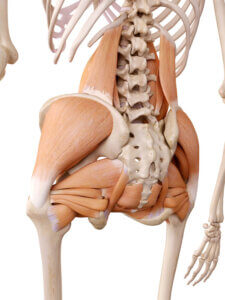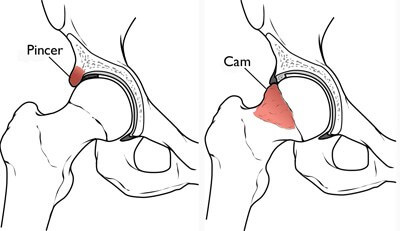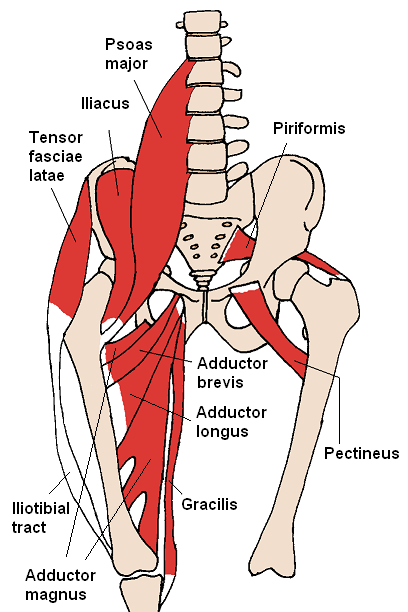With the hip being such a complex and mobile joint, pain and discomfort around the area can puzzle even the most experienced practitioners when diagnosing the wide range of conditions that can arise from the hip.
We are all aware of the range of benefits exercise has on the body both physically and mentally. However, the past couple of years have been different for many of us including the numerous lockdowns, working from home and potentially less walking to and from the office. This in turn can lead to being more sedentary whilst sat at home with poor desk set ups from 9-5. Conversely, some of us have suddenly had more time to put on our running shoes and start training for that first ever 10k race. Both of the above when done excessively can place repetitive loads on the hip joint whilst over time leading to pain and discomfort interfering with daily life.
As practitioner’s it is important that we can accurately diagnose where your pain is coming from and what structures are involved in order to provide the most efficient plan of treatment. The most common causes of hip pain we see here at Care for Health can arise from;
- Lumbar spine (lower back)
- Hip impingement
- Soft tissue (tendon, muscles and ligaments)
- Osteoarthritis
- Lumbar spine

It is important to note that a dysfunction in the lower back can refer pain to the hip /groin region especially if a nerve is being pinched from an irritated spinal joint or disc. With low back pain being so prevalent in modern day society and an extremely common condition we see here in the clinic, we tend to treat a lot of hip issues! Excessive sitting, lifting incorrectly and repetitive poor posture are all contributing factors that can overload the spinal joints whilst de-conditioning the spinal stabilising muscles. The role of these muscles is to support the spine whilst moving and performing day to day tasks. So to reduce the risk of your back referring pain to your hips ensure to get your spine checked regularly by your chiropractor keep it mobile and strong.
Hip impingement
The technical term for this is femoroacetabular impingement (FAI). This is due to the anatomy of the femoral head (ball of the hip) meeting the acetabulum (cup of the hip) making it a ball and socket joint. Typical symptoms of FAI include motion or position related hip or groin pain i.e. sitting cross legged or getting in or out of a car. Clicking, catching, locking or sharp pain are all common symptoms of FAI. Typical clinical findings in individuals who present with hip impingement are something called CAM or PINCER lesions. These lesions are protrusions of bone which occur either on the femoral head or acetabulum which then result in a pinching of the joint during movement causing pain and limited range of motion. Specific orthopaedic testing and X-rays are used to determine if these lesions are occurring at the hip. The goal of rehabilitation is to increase the range of motion of the hip whilst strengthening the area to help keep the joint strong and healthy. The last resort will often require a surgical procedure to help smooth off the joint surfaces preventing impingement.

Snapping Hip Syndrome
As the hip is a complex joint with a wide range of motion there are many different muscles acting on it which contract and relax at specific times enabling us to walk, run, bend forward and to catch ourselves when falling. Many of us are guilty of too much sitting and slouching at the desk which over time can alter the structure of the hip flexors, hip adductors or gluteal muscles leading to pain and dysfunction around the hip. A common symptom patients in clinic present with is a ‘snapping’ sensation at the front of the hip. This is typical of someone who does a lot of sitting or has poor standing posture which results in a shortening of the hip flexor muscles. This in turn cancause the tendon to flick over the front of the hip bone when moving the hip in specific positions during either daily tasks or exercise. Repetitive use of the muscle in a shortened position can lead to a thickening of the tendon resulting in the ‘snapping’ sensation causing pain and discomfort.

Osteoarthritis
IF you have been told you have osteoarthritis (OA) of any joint please try to not let it prevent you exercising or being active! There are many different forms and stages of arthritis which will affect people differently. OA of the hip is when the smooth protective cartilage in the ball and socket of the hip joint starts to wear down which can cause pain, swelling and a limited range of motion. Common factors predisposing people to OA include repetitive use of the hip at a younger age, obesity which will place increased stress through the joint or previous injuries not healing efficiently. The main goal of treatment for OA is to keep your hip as mobile as possible whilst strengthening the supporting muscles around the joint. Some of your activities may have to be adapted to provide more comfort, for example some hip joints with OA don’t like the breast stroke motion of swimming so the front crawl kicking motion is generally the preferred technique. Keeping your weight at a healthy level will also reduce the stress going through the hip alongside making sure your intake of vitamins and nutrients is adequate to support the health and longevity of your joints.

If you or someone you know if suffering with any form of hip pain, please do not hesitate to get in touch with us at the clinic so we can accurately diagnose what is going on and put you back on the path of health and wellness.
Adam Harrison
Sports Therapist

